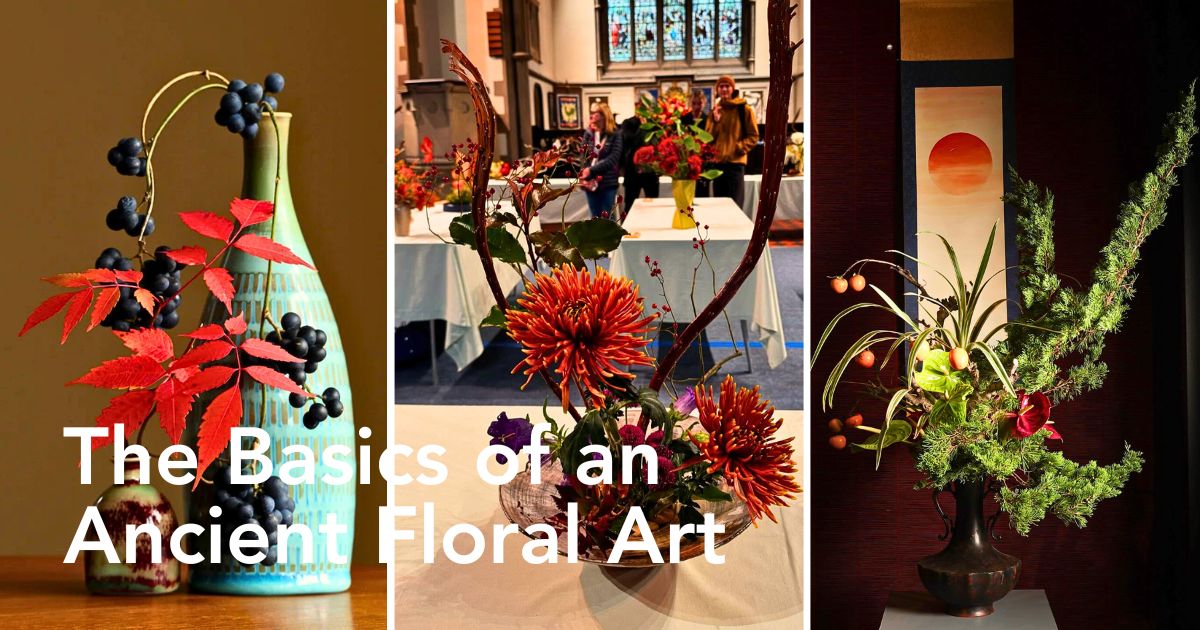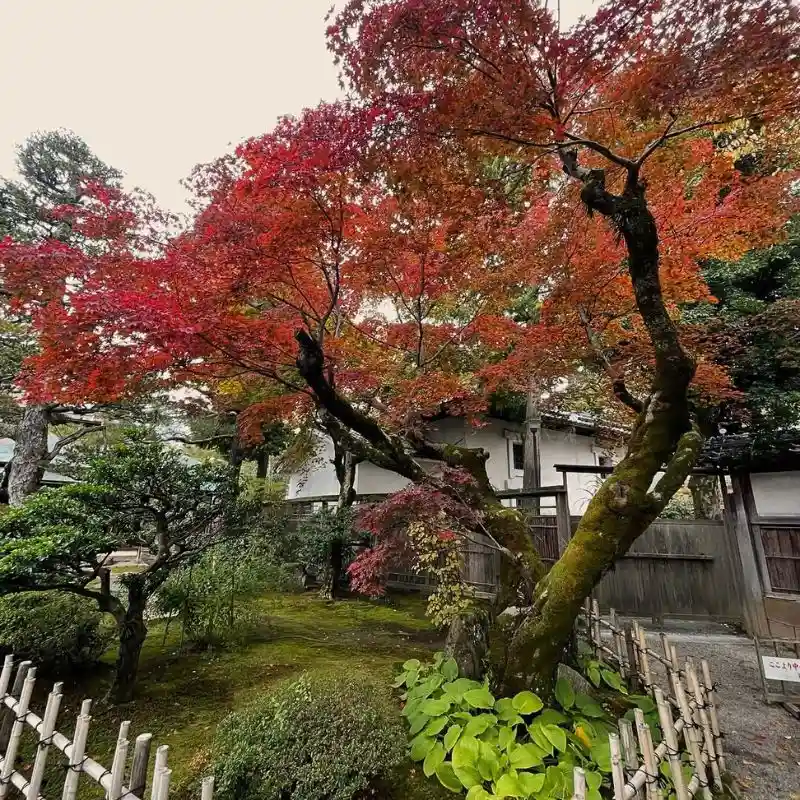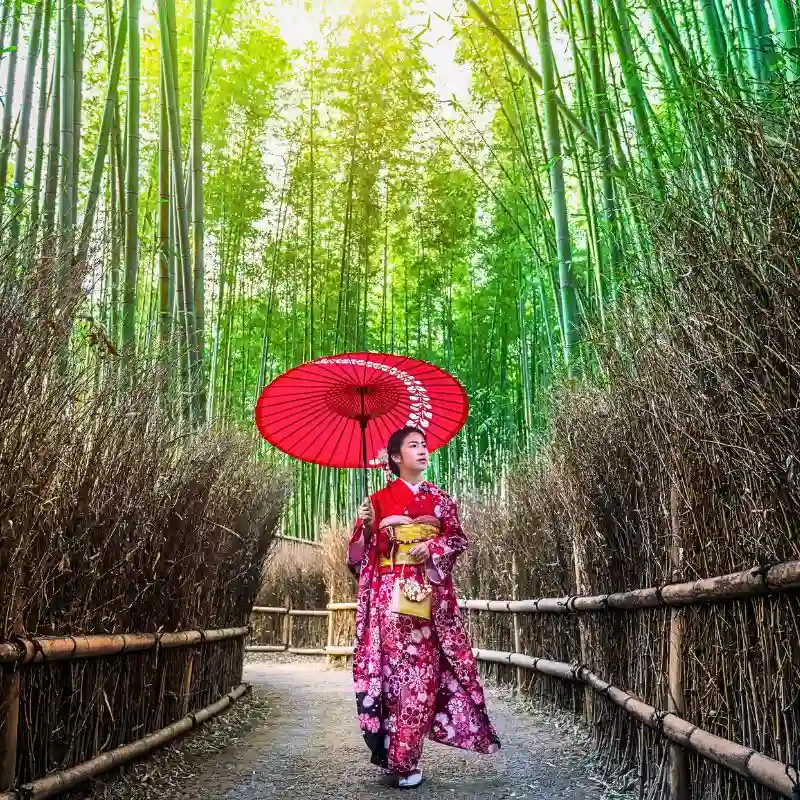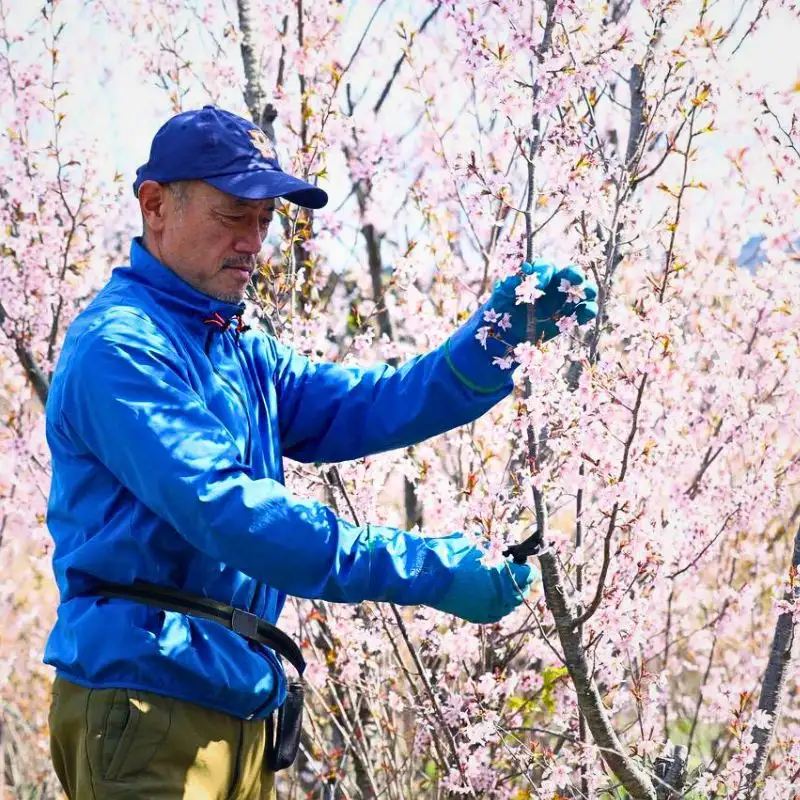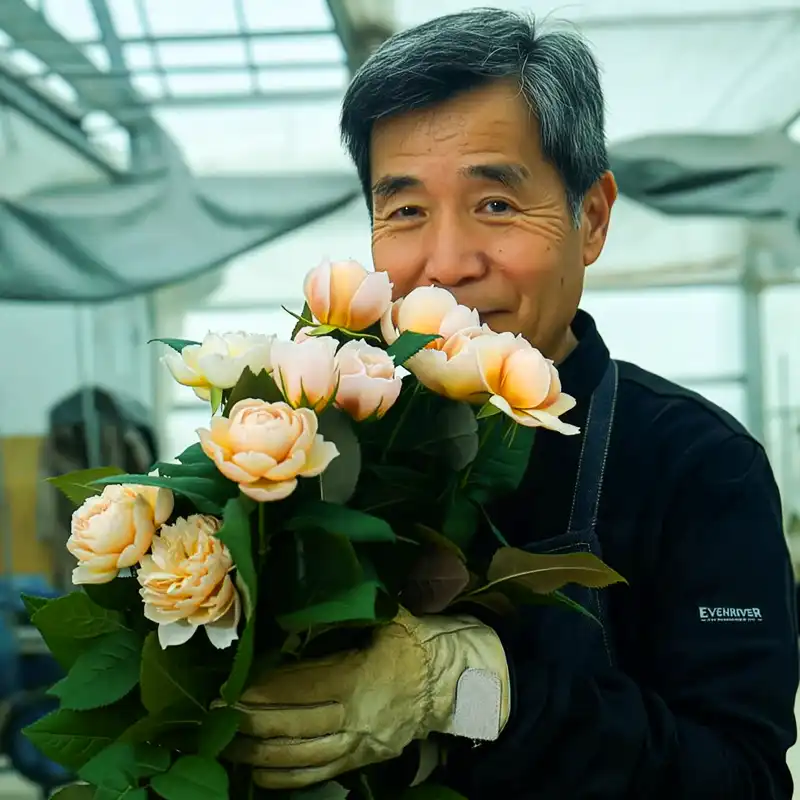Ikebana is an ancient art from Japan that has grown in popularity in the West since the end of World War II. It’s an art form that appears simple but is actually deceptively complex. Roughly translating to 'making flowers come alive', this ancient Japanese art of flower arrangement is a beautiful and meditative practice that can be enjoyed by people of all skill levels. However, as a beginner, the key is to start with a simple approach and focus on the fundamentals.
Thus, the aim of this guide isn’t necessarily to turn you into an instant ikebana master—immediately after reading—that would be impossible. Instead, it aims to help you overcome the intimidation that you may feel when beginning something new like this. Generally, you’ll learn enough to help you figure out if ikebana is something you want to take up and if so, what the first few steps on the path should be. So, here's all there is to know about ancient Japanese art.
The History of Ikebana
Ikebana is thought to have originated in Japan in the 6th century; the same time that Buddhism arrived in Japan from China. This isn’t a coincidence since Buddhists had long offered up flowers to Buddha at their temples. The flowers offered up in Japan began to reflect some of the principles of Buddhism. Being associated with Buddhism and the aristocracy, it was only a matter of time before it was taken up by the masses. By the 15th century, the floral arrangements that were initially just offerings to Buddha had become an art form known as ikebana.
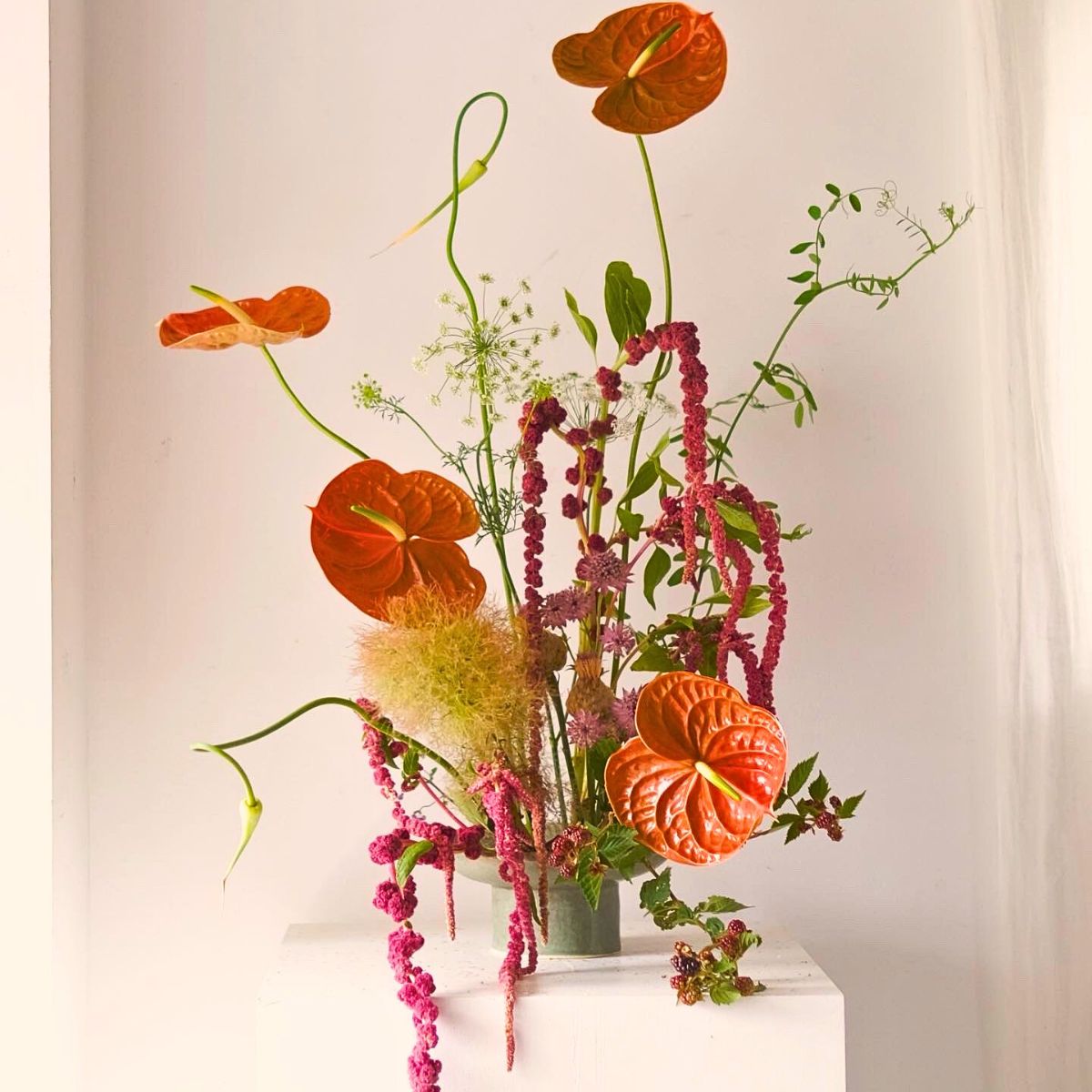
Photo by @midsummer_k
In Japanese, ikebana is made up of two characters: 生 and 花 (shēng and huā). The first means 'life', while the second means 'flower'. It’s for this reason that ikebana is often translated in English as ‘bring life to the flower’.While different schools have emerged and ikebana has evolved since the early days of the art form, originally ikebana arrangements were created with a similar theme in mind; one of three lines that represented heaven, man, and earth.
A Form of Meditation
Ikebana is considered a form of meditation, with silence often encouraged to help the mind focus on the arrangement. Minimalism is, also, a key aspect at the heart of ikebana. This sets it apart from fuller Western styles. The form of ikebana allows flowers to stand naturally and flow with nature. Essentially, the word 'ikebana' comes from the Japanese words 'ikeru' (to arrange, be living, or have life) and 'hana' (flower). Unlike other floral arranging techniques, which are largely informal, ikebanas are precise and meaningful.
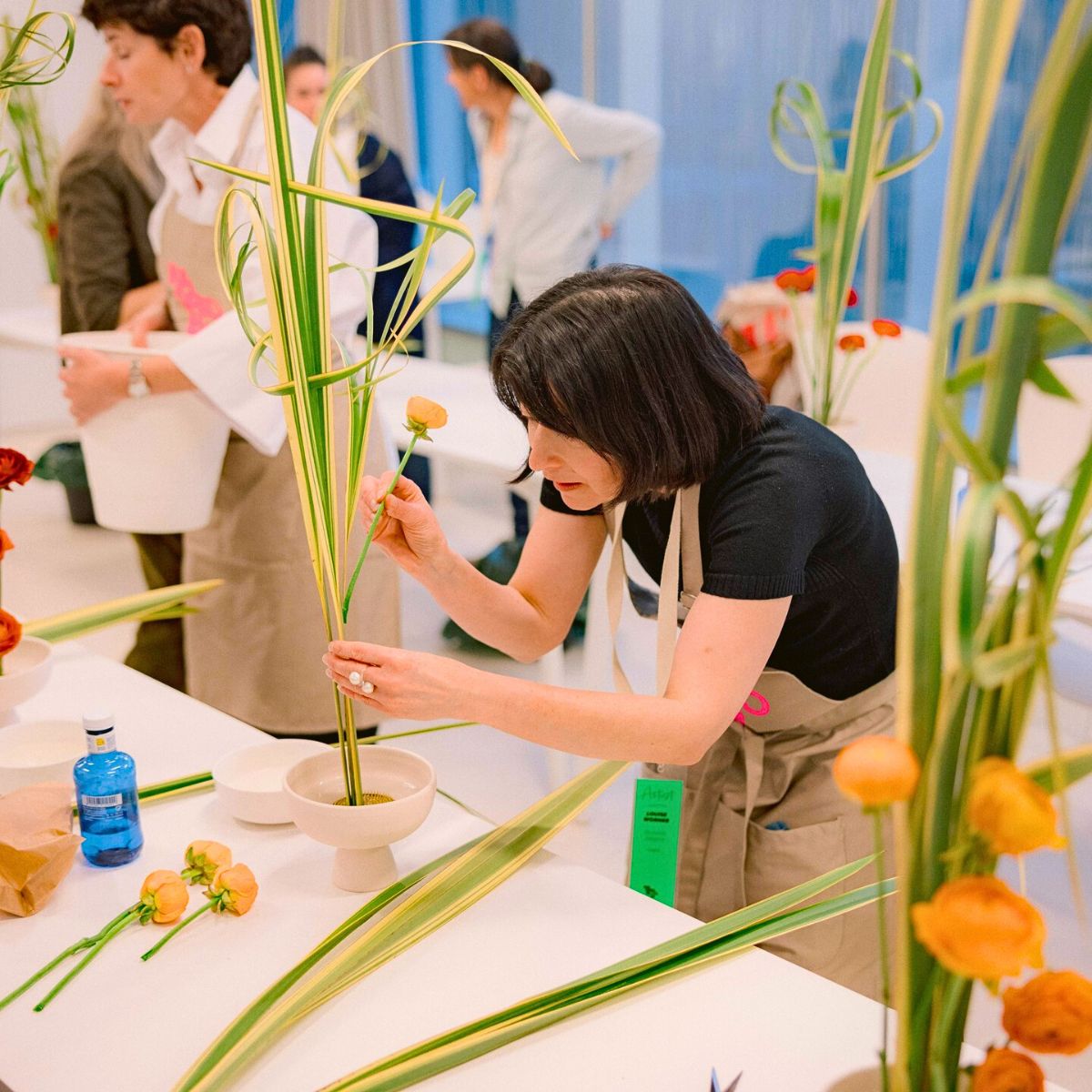
Photo by @louise_worner
Unlike Western floral arrangements that often emphasize symmetry, ikebana values asymmetry and the use of negative space. This approach creates a sense of movement and dynamism within the arrangement. This ancient floral art technique, also, focuses on seven harmonious principles intended to make the practice a peaceful and mindful style of arranging flowers. Seasonality is a core part of ikebana, and creating a triangular shape with flowers, symbolic of 'ten' (heaven), 'chi' (earth), and 'jin' (man), is essential to the arrangements.
For more info about this floral art, here are some of the Best Ikebana Books to Get You Into the Art of Arranging Flowers
Mastering the Fundamental Techniques of Ikebana
Mastering ikebana requires careful consideration of some important elements. One of these core principles is Shizen-bun or natural proportion. This approach emphasizes the careful consideration of the relationships between the various elements in an arrangement, ensuring that the height, width, and positioning of the flowers, branches, and foliage mirror the harmonies found in the natural world.
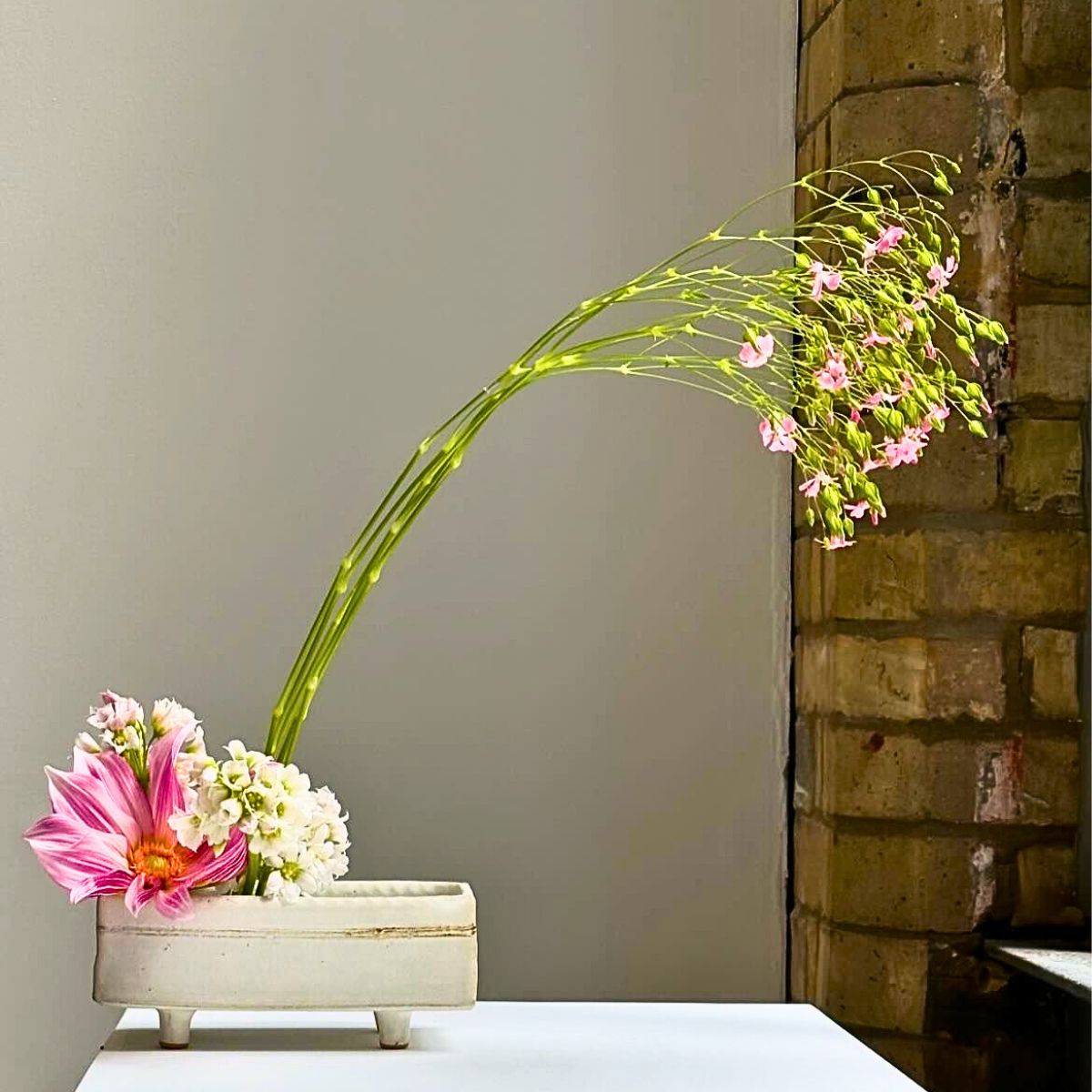
Photo by @mos.london
Another crucial technique is 'shin-soe-hikae', which establishes a hierarchy within the composition. The main focal point, or 'shin' is supported by secondary elements, or 'soe', and accented by smaller, complementary features, known as 'hikae'. The shin represents the tallest and most prominent part, symbolizing heaven or the spiritual world. The soe serves as a secondary element, representing humanity and connecting the shin and hikae. The hikae is the lowest and smallest element, symbolizing the earth or the physical world. These elements work together to create a feeling of balance and harmony, with their delicate balance allowing the eye to be drawn to the arrangement's focal point while appreciating the nuanced interplay of the supporting elements.
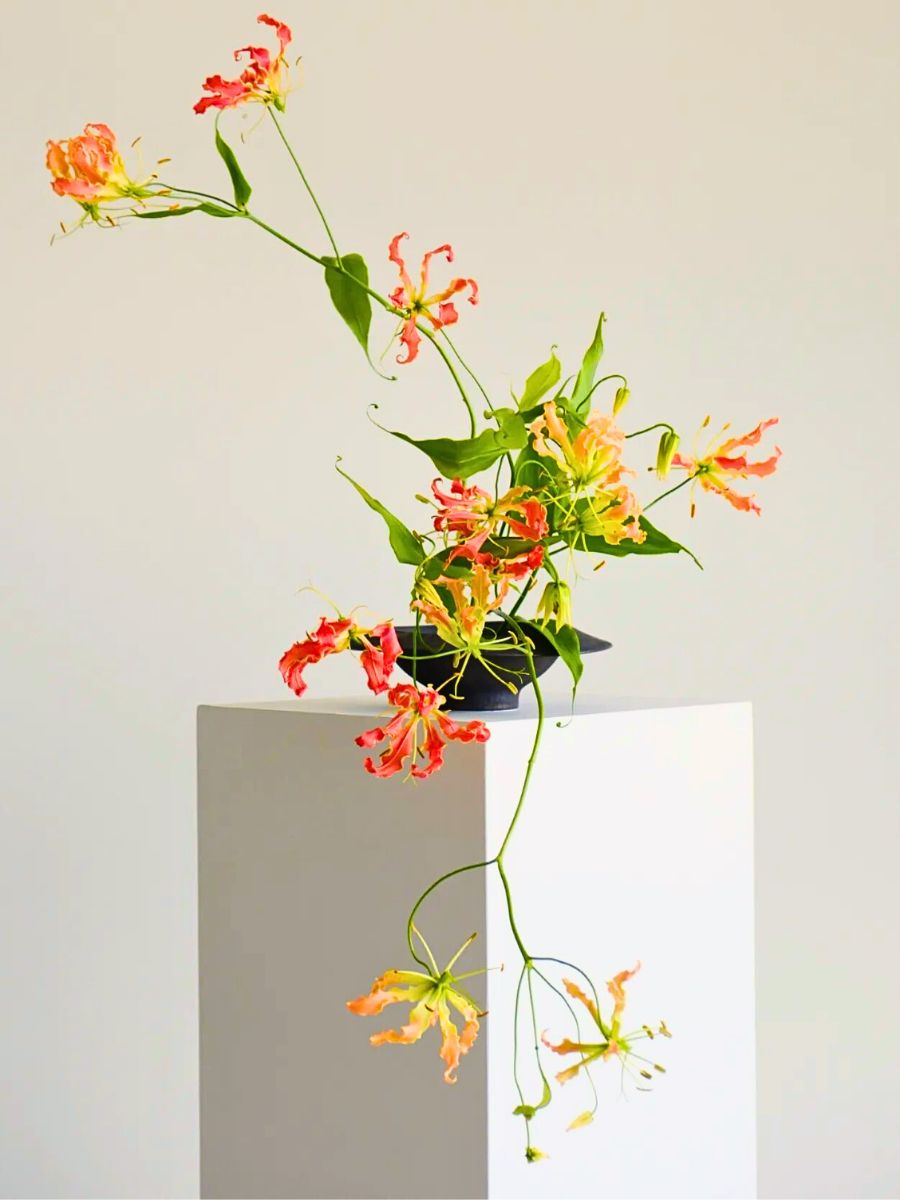
The placement, or 'kubari', of the materials is also of utmost importance in ikebana. Practitioners meticulously consider the angle and positioning of each stem, leaf, and flower, crafting a visually balanced and harmonious arrangement that guides the viewer's gaze through the composition. Equally essential is the 'kado', or the lines created by the stems, branches, and foliage. Ikebana artists strive to cultivate graceful, flowing lines that evoke a sense of movement and energy, inviting the viewer to engage with the arrangement on a deeper, more emotional level.
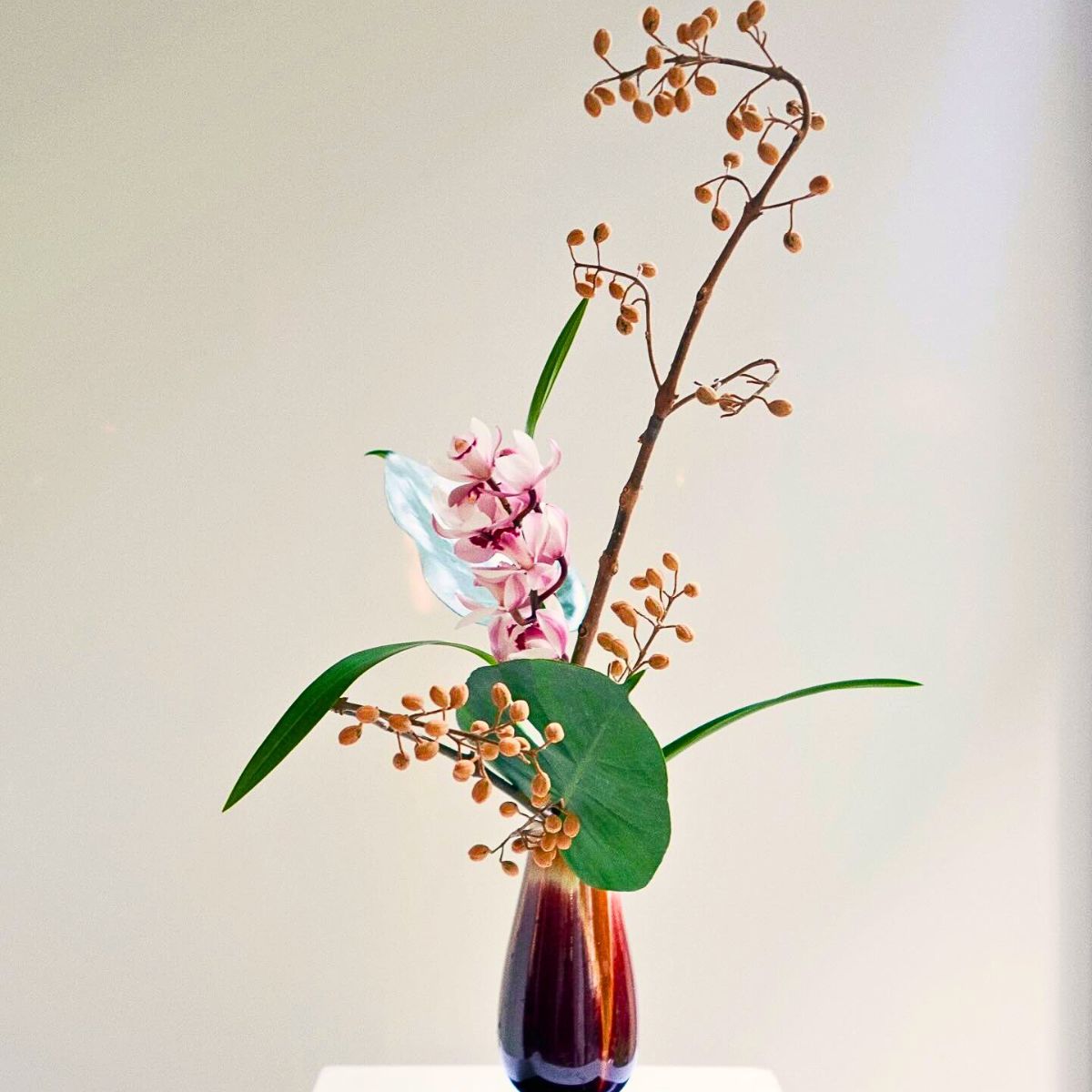
The 'kuki', or the stems and leaves themselves, are not merely functional elements but integral parts of the design. Ikebana practitioners pay close attention to the shape, texture, and color of these natural materials, using them to enhance the overall aesthetic and convey a deeper connection to the natural world. Mastering these fundamental techniques and elements guarantees that ikebana artists can create arrangements that speak to the heart, bridging the gap between the human and natural worlds.
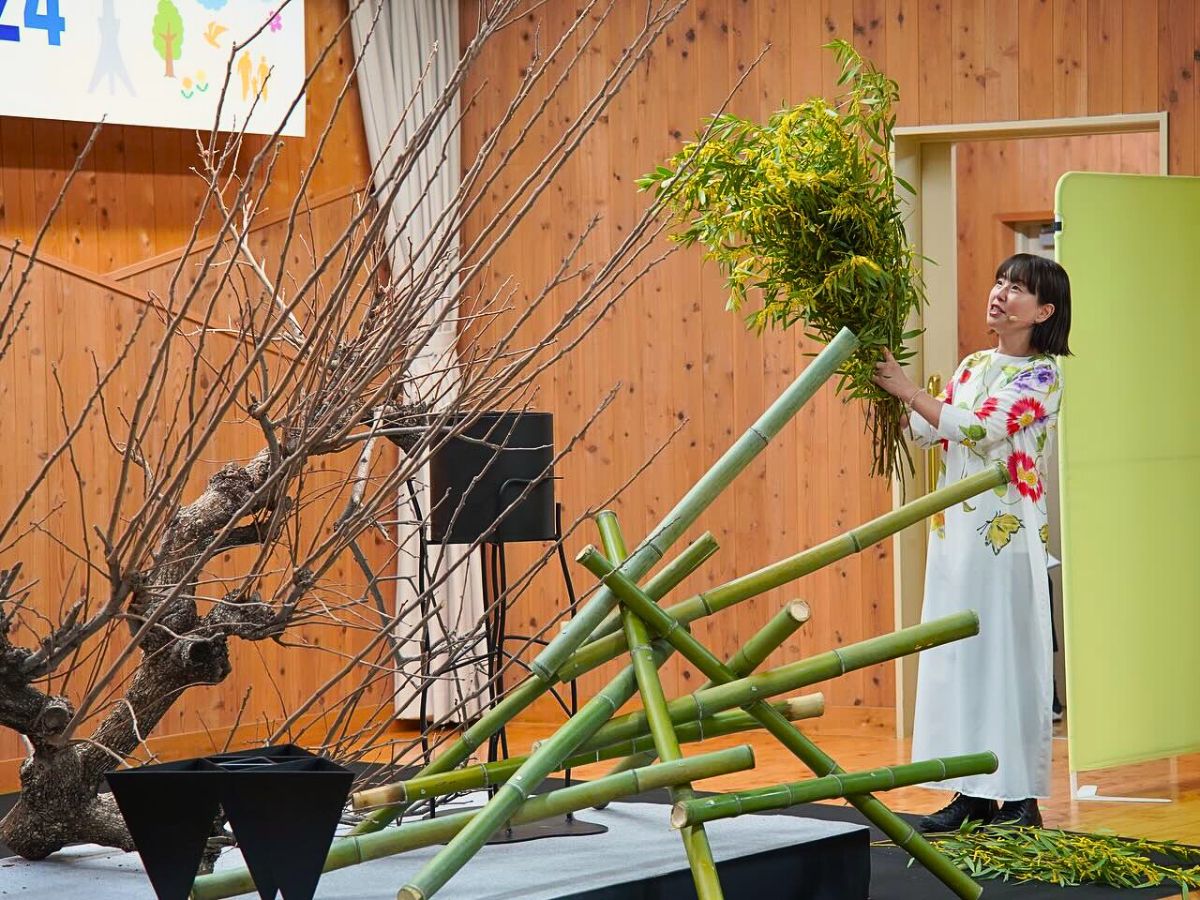
Photo by @mikaotani_flowers
Basic Skills for Mastering Ikebana
Before you can begin to create arrangements of your own, there are some basic skills that you must first acquire. Without these basics, it will be hard to create anything, regardless of your imagination or creativity. It’s also helpful to understand the environmental factors that will affect your arrangement. Ikebana, being made from flowers, lasts longest in environments where flowers flourish.
Some humidity is welcome and will help keep the flowers fresher for longer. In addition, a cooler environment is preferred to a hot one, as warmer temperatures cause cut flowers to die sooner. You should also endeavor to keep your arrangements away from smoke, strong sunlight, and air conditioning.
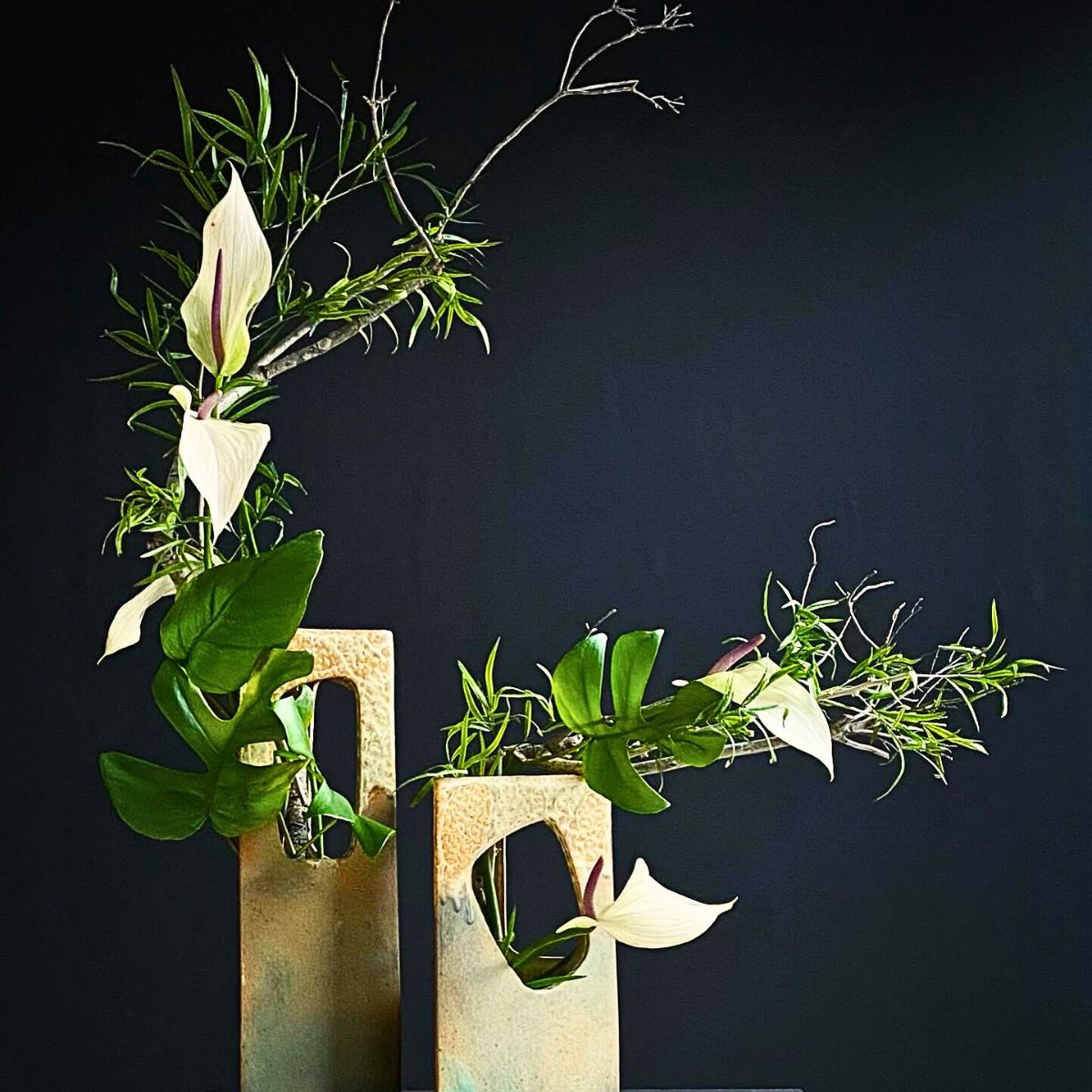
Cutting Basics
If you’re going to be doing ikebana, one of the things you’ll find yourself doing frequently is cutting flowers. While this may seem simple to do, there are a few things to note that will make the cutting much more successful. One technique frequently used by ikebana practitioners is known as 'mizukiri', or ‘water-cut’. This refers to the method of cutting stems of flowers underwater to prevent air from finding its way into the stem of the flower. Doing this will keep your flowers alive longer, so it’s important to get into the habit of doing this.
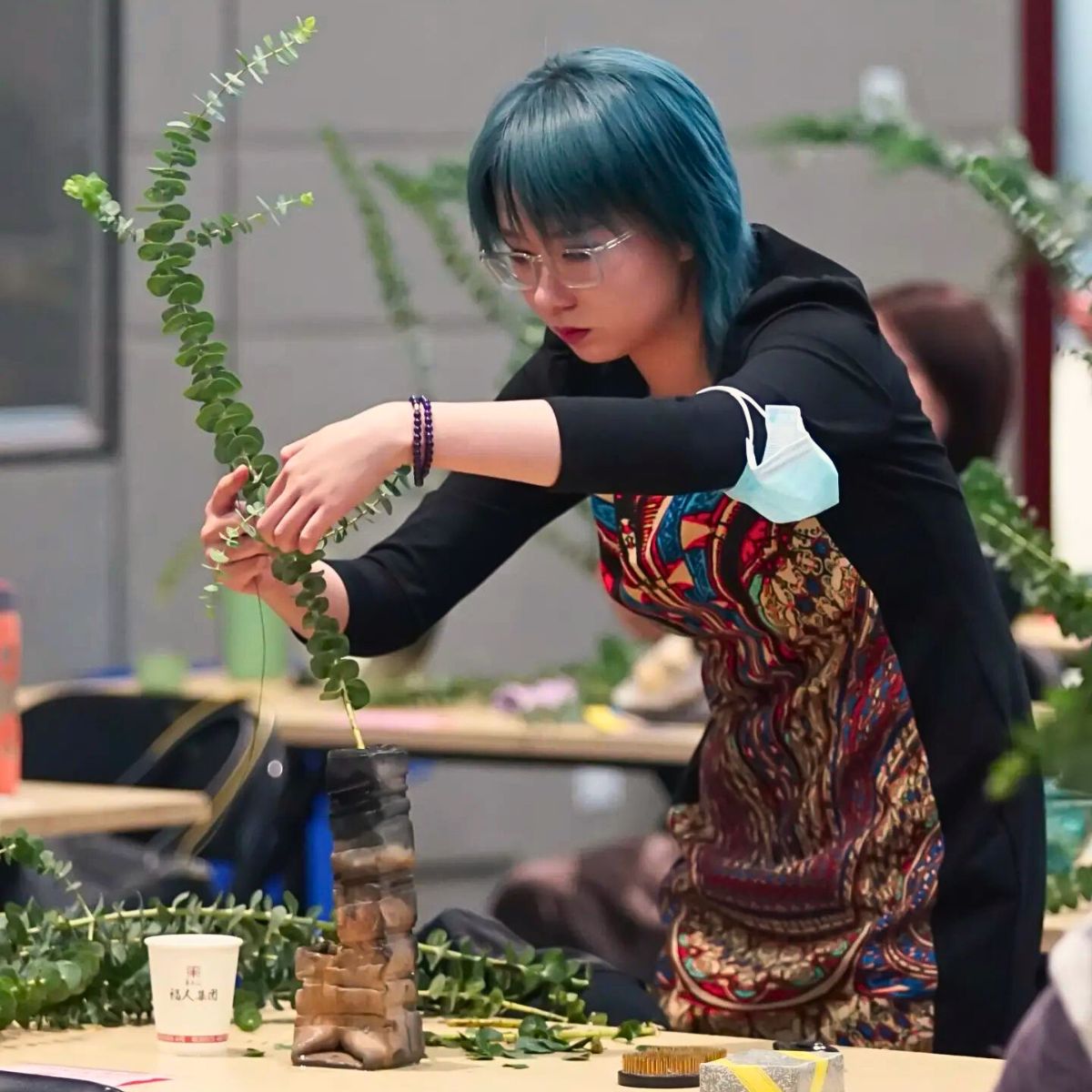
Second, you need to make sure you’re cutting the right way. If you’re using a kenzan (we’ll explain what this is shortly) to hold your flowers in place, then you’ll want to make the cuts straight across the stem so it can be better held in place. However, if you’re using a vase to hold your flowers, then you’ll want to use a diagonal cut so that the surface area of the cut is maximized, meaning that water will be more readily absorbed into the stem, keeping the flower alive for longer.
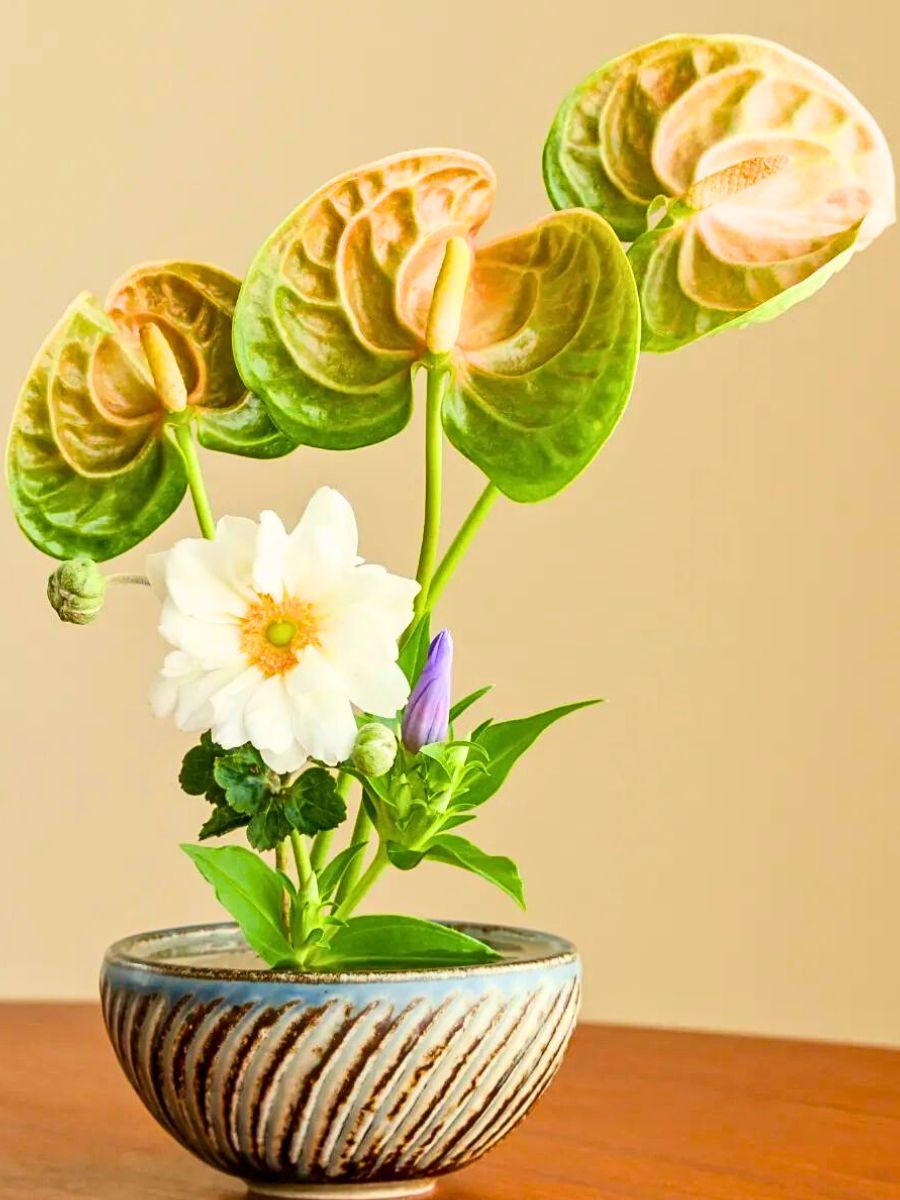
Trimming Basics
Another activity you’ll find yourself doing when practicing ikebana is trimming. Because ikebana is always made with clean lines in mind, you’ll want to remove any twigs and small branches that are getting in the way of this aim. Doing this is a skill, but by visualizing the arrangement as you want it, then gradually trimming away leaves and smaller branches until there’s nothing more to remove, your arrangement will be greatly improved. Also consider getting rid of leaves below the waterline since they won’t really add anything to the arrangement, but could encourage the growth of bacteria.
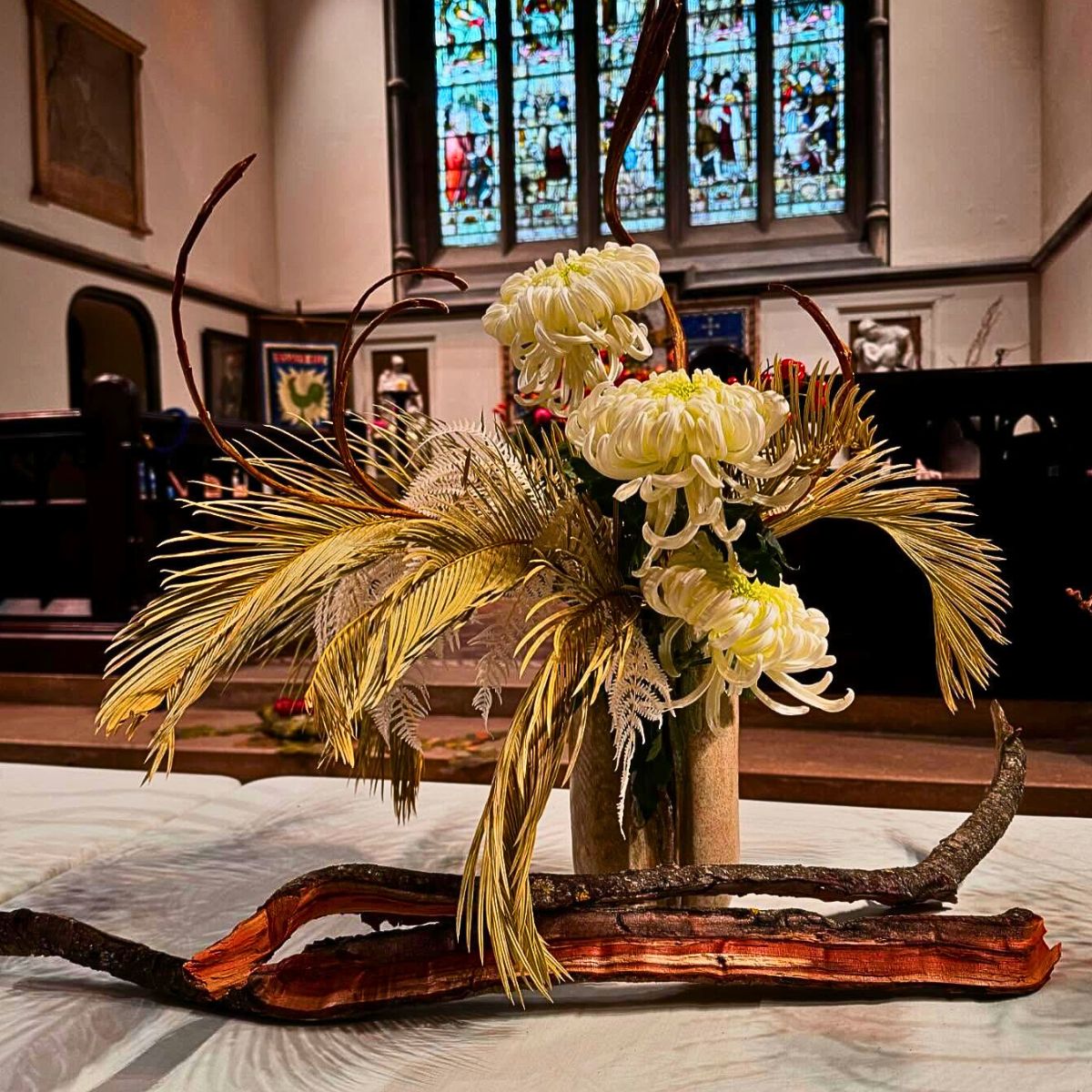
Cleaning Leaves
It might sound a bit over the top (and if you’re just getting started it might be), but if you want to get the most out of your arrangements then it’s helpful to clean your leaves. By applying a wet paper towel to your leaves, you’ll add a freshness that not only keeps them looking nice but also helps to keep them alive a bit longer.
Capping and Splitting
Using a kenzan is a must for certain ikebana styles, but it’s not always possible to stick thinner stemmed flowers onto it. When this happens, you have the option of capping your stems to allow this process to become easy. How it works is you take your thin stem and place it into a thicker stem, which is then placed firmly onto the kenzan. It sounds trickier than it is, but once you’ve done it once or twice you’ll find that it’s very easy to do and makes your life much easier.
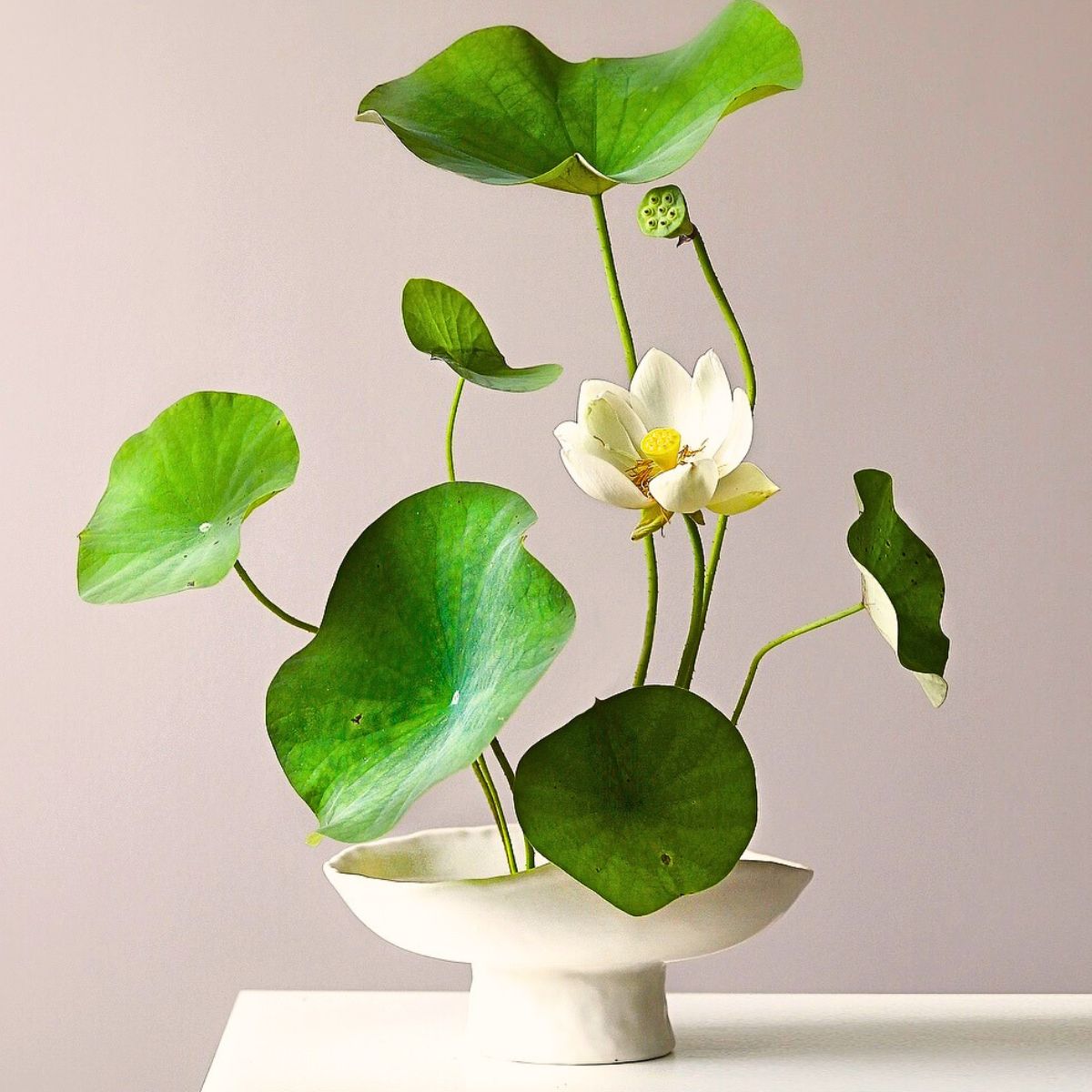
Another method for achieving the same goal is to use a splint. To do this, you simply take another small piece of stem and attach it to the stem that you want to arrange. Which method you prefer depends on your personal preference as well as what materials you have on hand.
A Simple Guide to Creating Ikebana Arrangements
While the fundamental techniques of ikebana may seem daunting at first, following a structured approach can unlock the creativity and depth of this centuries-old discipline. Begin your ikebana journey by immersing yourself in nature. Take a leisurely stroll through a garden, park, or forest, and allow yourself to be drawn to the organic forms, textures, and colors that spark your imagination. Carefully select a few key elements, such as branches, flowers, and foliage, that resonate with you on an emotional level.
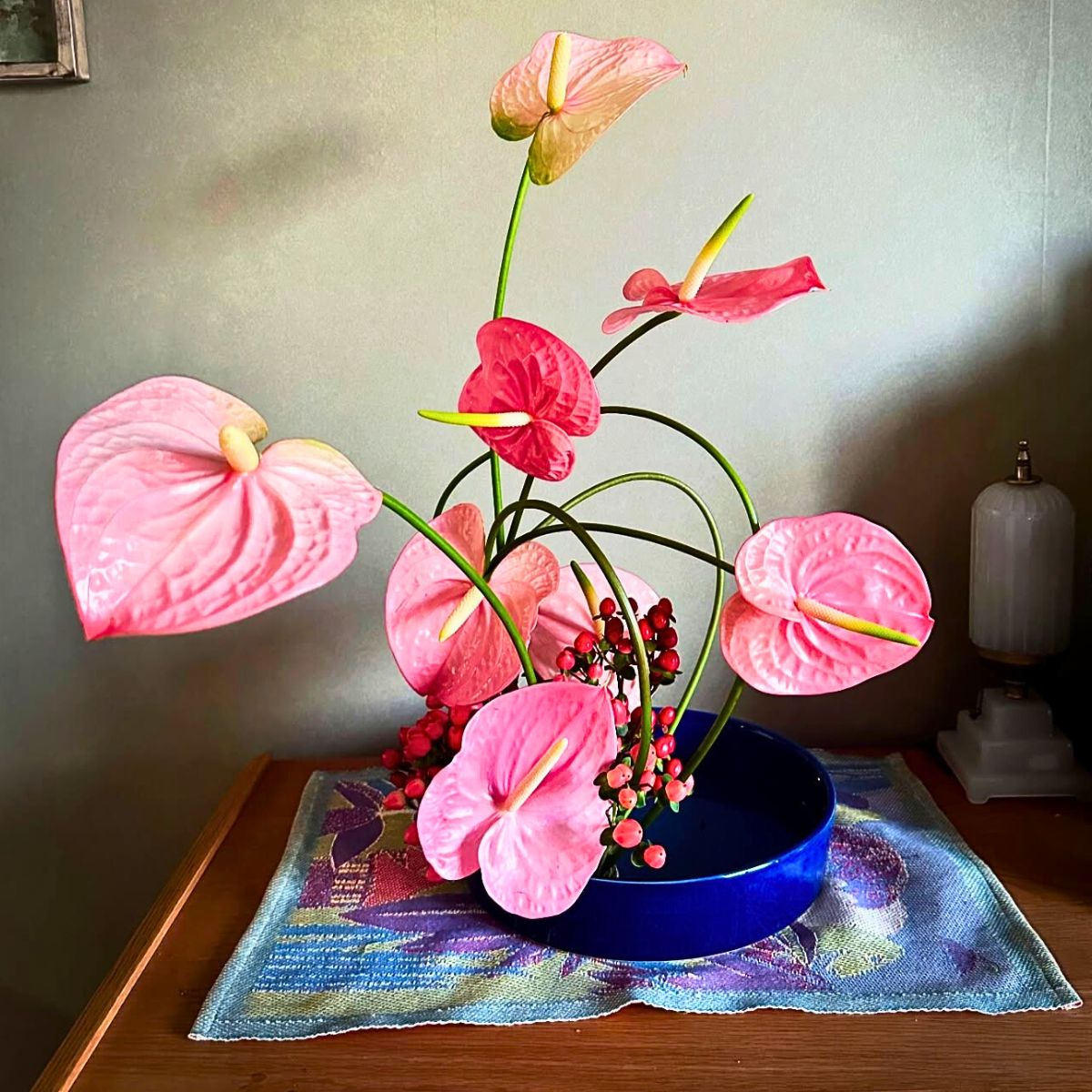
Next, choose an appropriate container for your ikebana arrangement. Shallow, wide vessels are often preferred, as they allow for the creation of dynamic and visually engaging compositions. Additionally, consider incorporating a kenzan, or flower frog, which will help secure the stems and enable you to precisely position the materials. With your natural elements and container in hand, it's time to begin the arrangement process. Start by placing the tallest stem, known as the 'shin', which should approximately be twice the height of the container. This focal point will serve as the foundation for the rest of the composition.
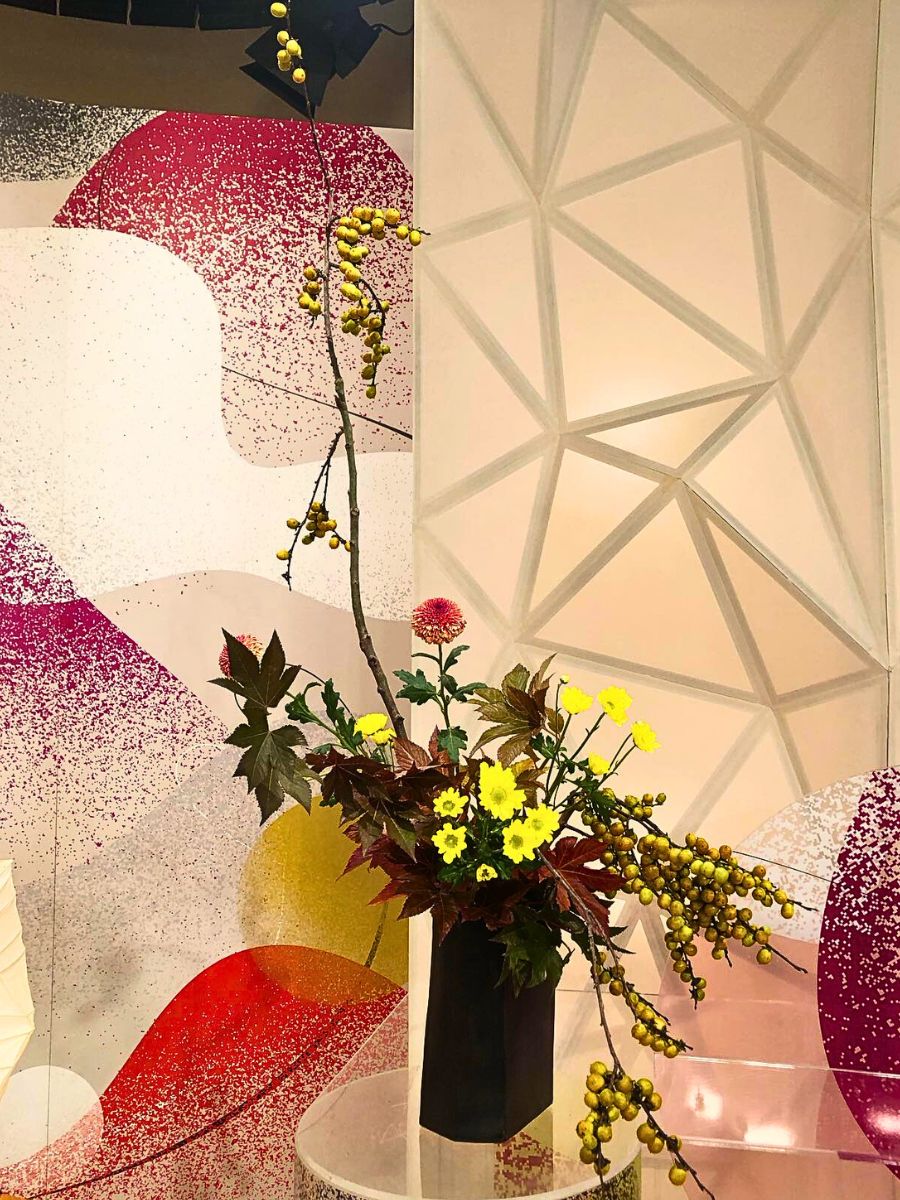
Complementing the shin, incorporate the 'soe', or secondary elements, which should be shorter in height, roughly one-third that of the shin. These supporting stems will help guide the viewer's eye through the arrangement and create a sense of depth and movement. Finally, add the 'hikae', or accent elements, which are the smallest components of the ikebana composition. These delicate touches can include small flowers, leaves, or even naturally found objects, and they serve to balance the overall design and draw the eye to specific areas of interest.
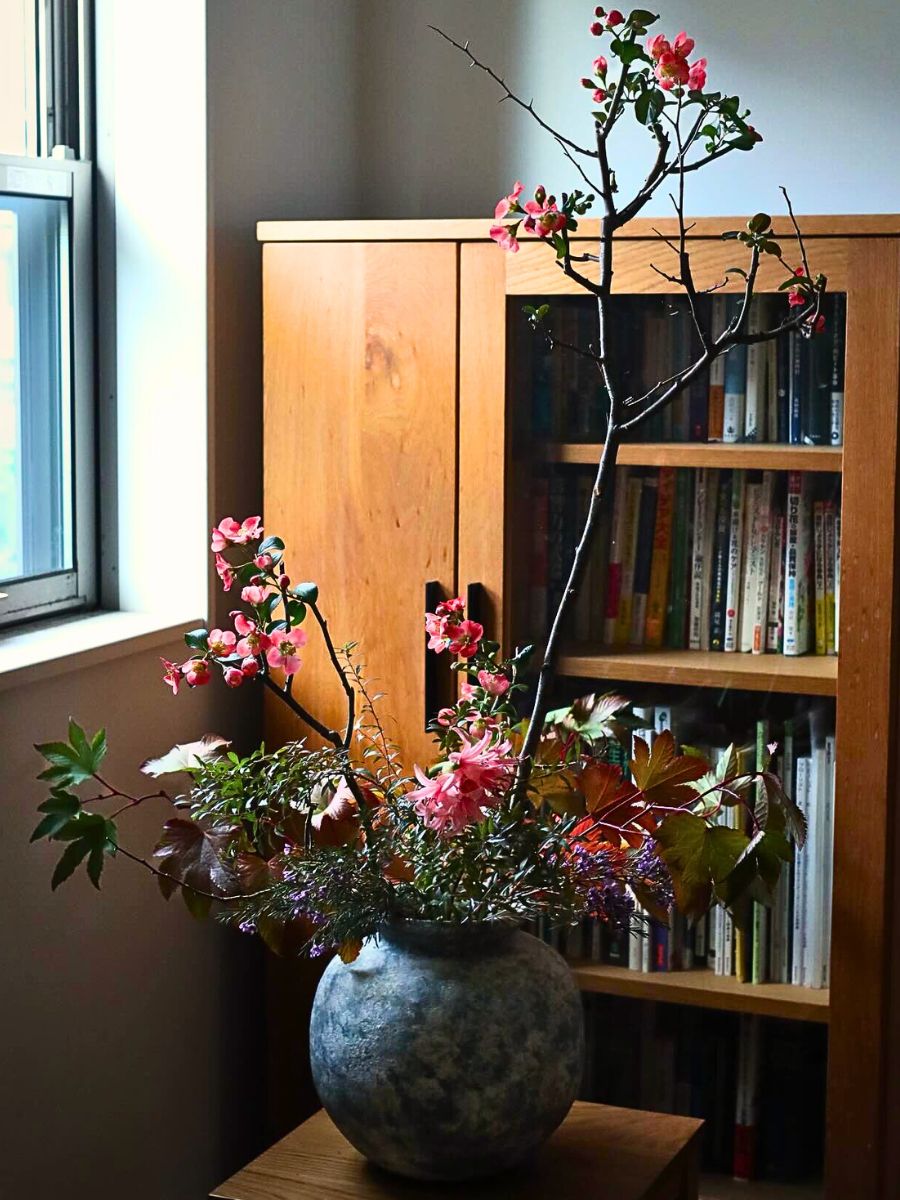
Throughout the process, pay close attention to the placement and angle of each stem, leaf, and flower. Try to create a sense of harmony and balance, allowing for the natural flow and imperfections of the materials to shine. Also, embrace the principle of 'wabi-sabi', which celebrates the beauty of impermanence and the integral flaws within nature.
Feature image by @quinn_zsw, header image by @hayayamaru, @richmillerpots, and @lemonxzp1990

